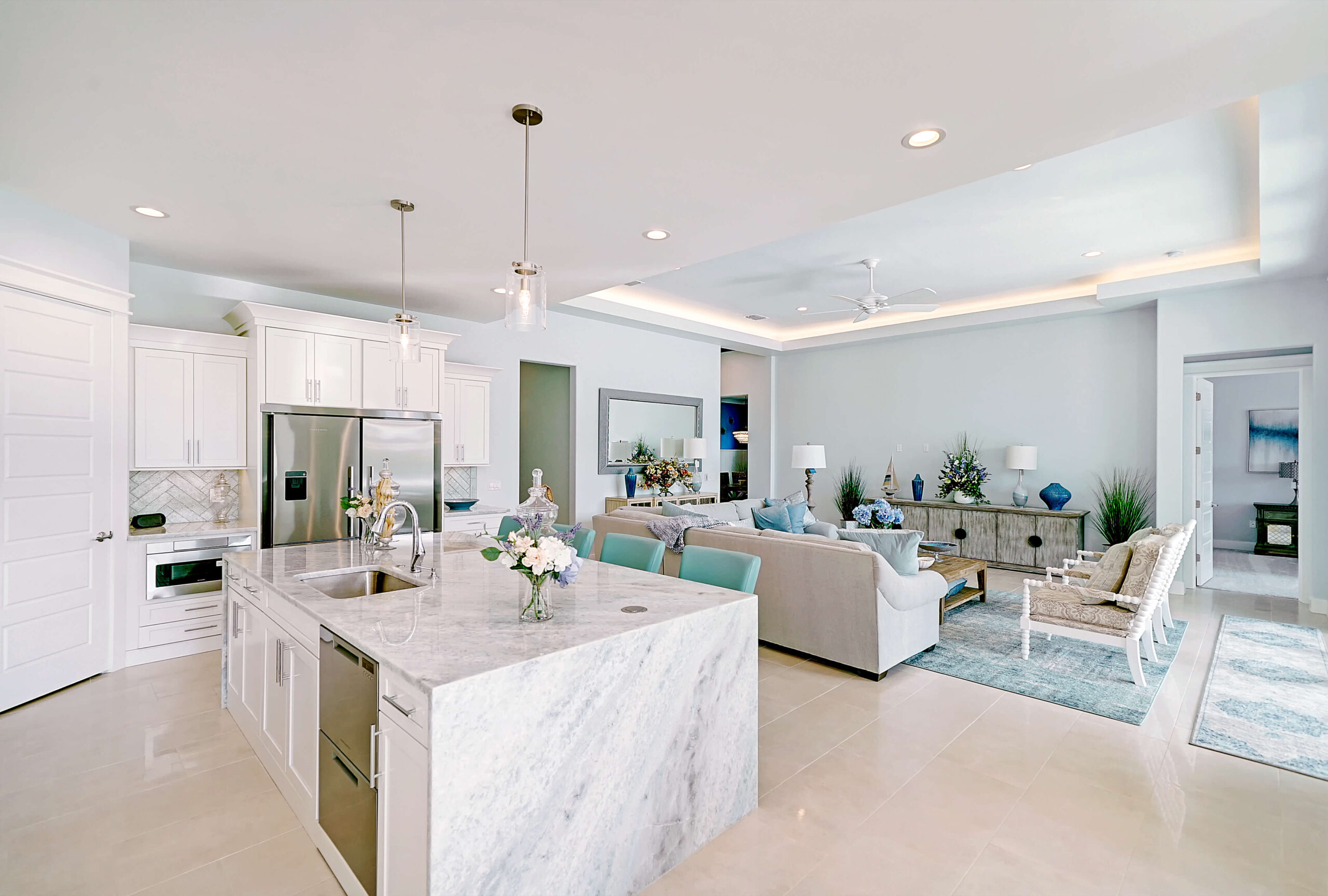When it comes to the ultimate in outdoor living, nothing beats an outside kitchen, complete with all the amenities of a traditional interior space. It takes entertainment to a whole new level and is ideal for hosting parties around the pool and nice for family dinners on weekend evenings.
There’s just one, actually several, problems that homeowners inadvertently invent and invite on themselves because they do not take into consideration some undeniable factors. Every home improvement project comes with its own set of challenges and just like hardscaping or implementing measures to deal with common pests, it isn’t a simple do-it-yourself proposition.
To make the most of your existing landscape, you’ll want to expand upon the theme already in place. One thing you really want to avoid is not synchronizing your new kitchen with your existing features. If you do, it will look out-of-place and that will negatively impact your home’s value come resale time.
Planning an Outdoor Kitchen Design
Like any other home improvement, planning is the key to success. That starts with creating a realistic budget and taking into account contingencies for unexpected problems. Determine your budget and subtract at least 10 percent for unwelcome problems. Then, begin to plan the ebb and flow of your new outdoor kitchen and do not be unwilling to remove or move some current features.
The outdoor kitchen takes the typical BBQ set up to the next level. It can include stovetop-style burners, griddles, roasting spits, sinks, refrigerators, storage space for dishes and cooking gear, low counters for prep work, bar-height counters for guests, stereo systems, TVs, and more. Outdoor kitchens range in cost from about $3,000 to, well, the sky’s the limit. —Desert News
Your main focus is twofold: work space and proximity to an entrance and exit to your home, and your guests. For instance, you should place the grill in a place that’s easy to access from your home as you’ll likely be going in and out of your main kitchen. What’s more, you don’t want to put a huge space between the grill, landing space, and serving area.
Avoid these Common Outdoor Kitchen Mistakes
Unfortunately, too many homeowners commit serious mistakes when they install an outdoor kitchen. It’s often to do with ineffective planning and not thinking through most likely scenarios for prepping food, cooking meals, and serving them. Here are the biggest mistakes made when installing an outside kitchen:
- Not enough light. It gets dark outside when the sun goes down. Everyone knows this meteorological fact, but for some strange reason, it goes without heeding when it comes to putting-in an outdoor kitchen. Since most homeowners do not spend much time in their backyard after sundown, it simply does not occur to them they will need plenty of lighting for preparing, cooking, and serving meals. Think about shadow-casting as, well, because such dark spots can confound cooking.
- Isolating the cooking area. Another big mistake is to place the grill and landing space strategically out of the way from the serving and eating areas. Sure, you don’t want to wrap your guests in a shroud of smoke, but you also don’t want to cut the cook off from hungry guests. Having to shout across the yard will be disheartening and aggravating. Think carefully about where you’ll install the grill to avoid having to constantly walk back and forth to hear what you’re guests are saying.
- Insufficient cabinet airflow. In the main kitchen, this usually isn’t much of a factor. However, outside is another matter. You don’t want to inadvertently create storage spaces which are a breeding ground for spores, molds, and fungus. Multiple vents are the answer to the conundrum of keeping stuff safely away from pests while providing adequate airflow. It’s important to remember that moisture will collect at the bottom of storage spaces, but vents should be placed low and high to mitigate the moisture factor.
- Lack of landing space. Ample landing space is necessary for an outdoor kitchen because its intended use will be to cater to large groups. Having enough space for staging food to cook and to place before serving is essential.
- Smoke from the grill. It seems like Murphy’s Law, but it is inevitably the case smoke will wind in the direction of the guest sitting area. A fan will be of good use here, along with an above the grill vent, minimizing the amount of smoke.
In addition to these missteps, don’t pick the wrong materials. For instance, avoid wood, because moisture will be aplenty, wreaking havoc on the material and creating a perfect environment for mold, mildew, and pests. What’s more, be realistic by accurately assessing the amount of space you’ll actually need. Too many homeowners try to check their budget by creating a small space. That inevitably results in lack of functionality, which is a key component of any outdoor kitchen.


